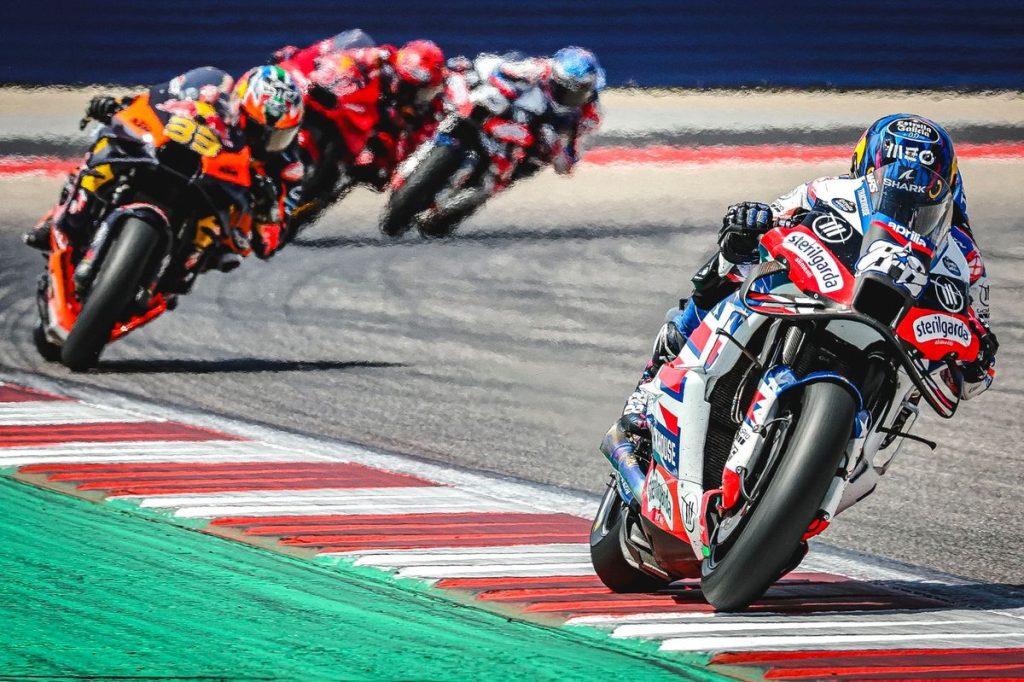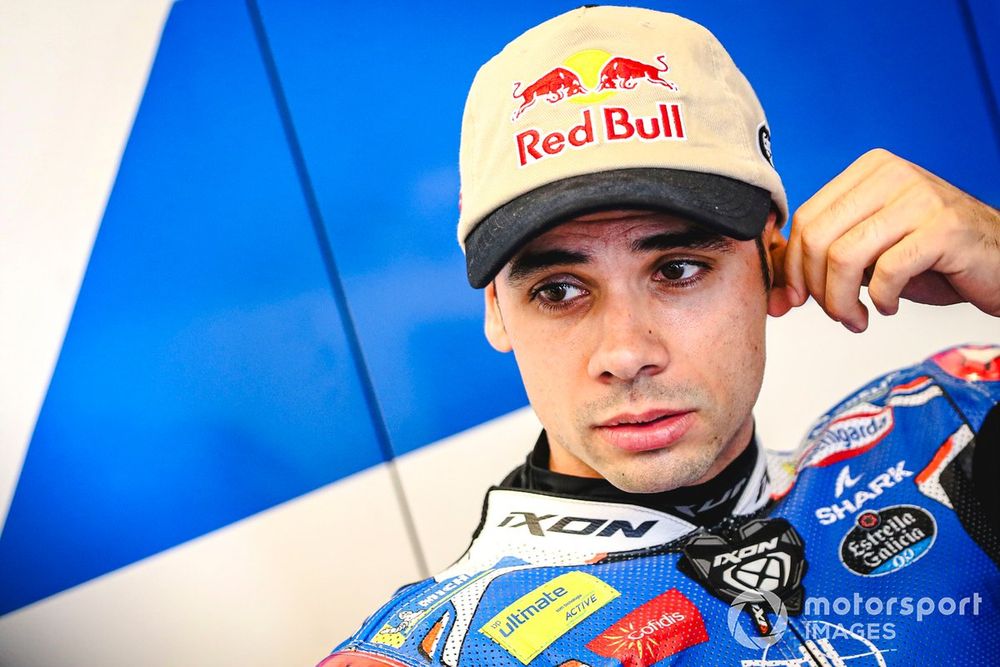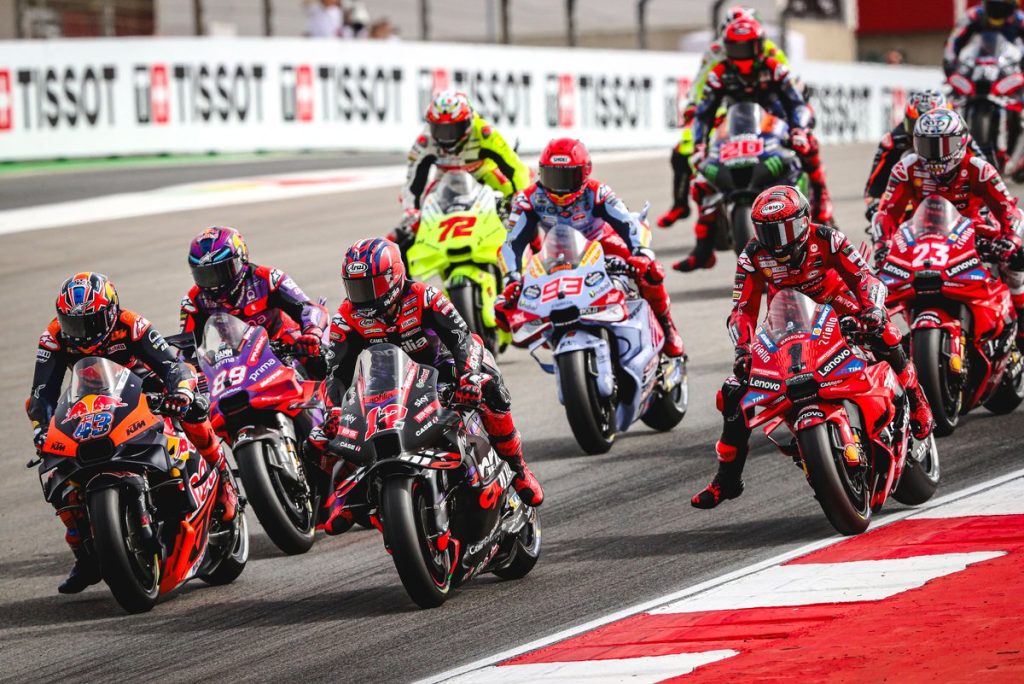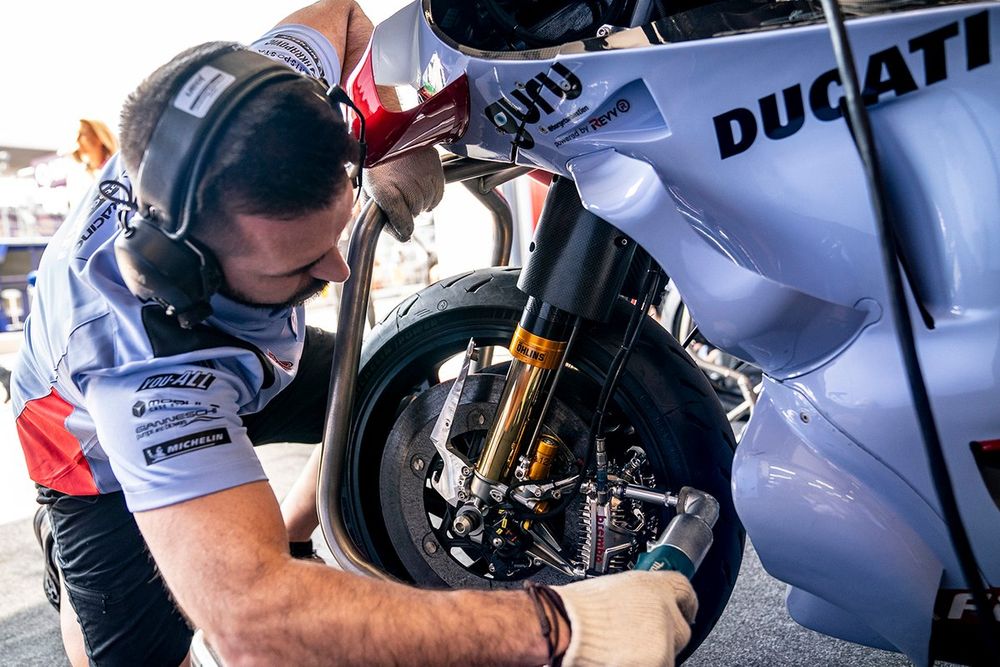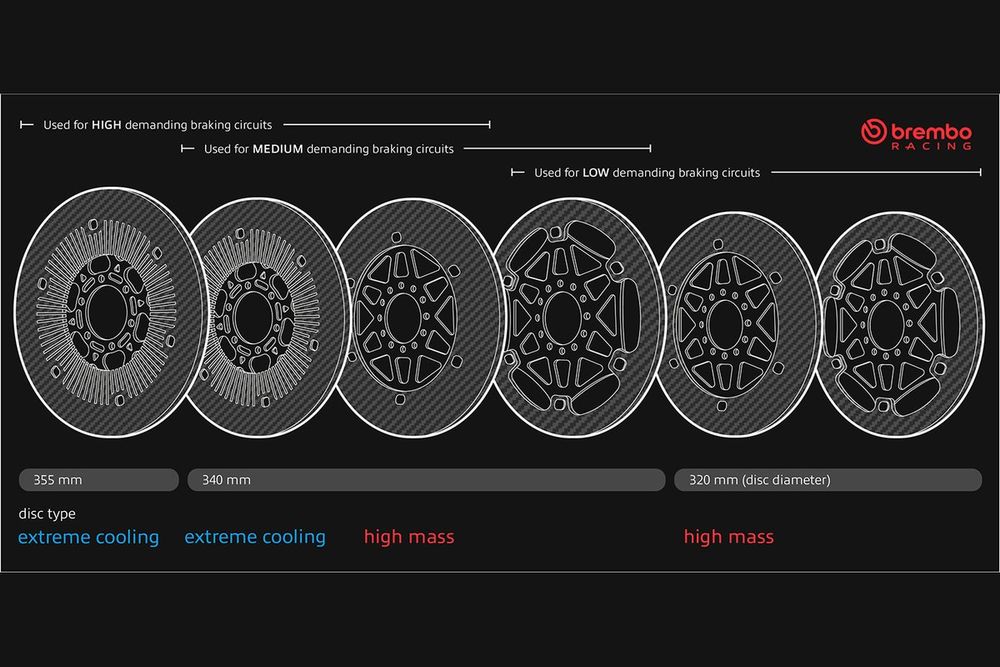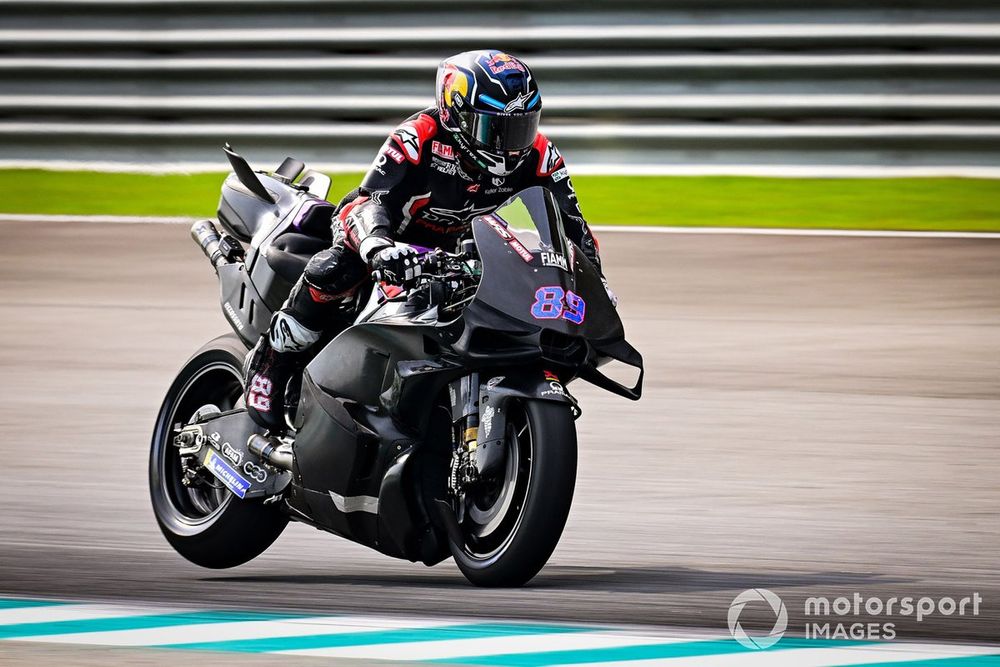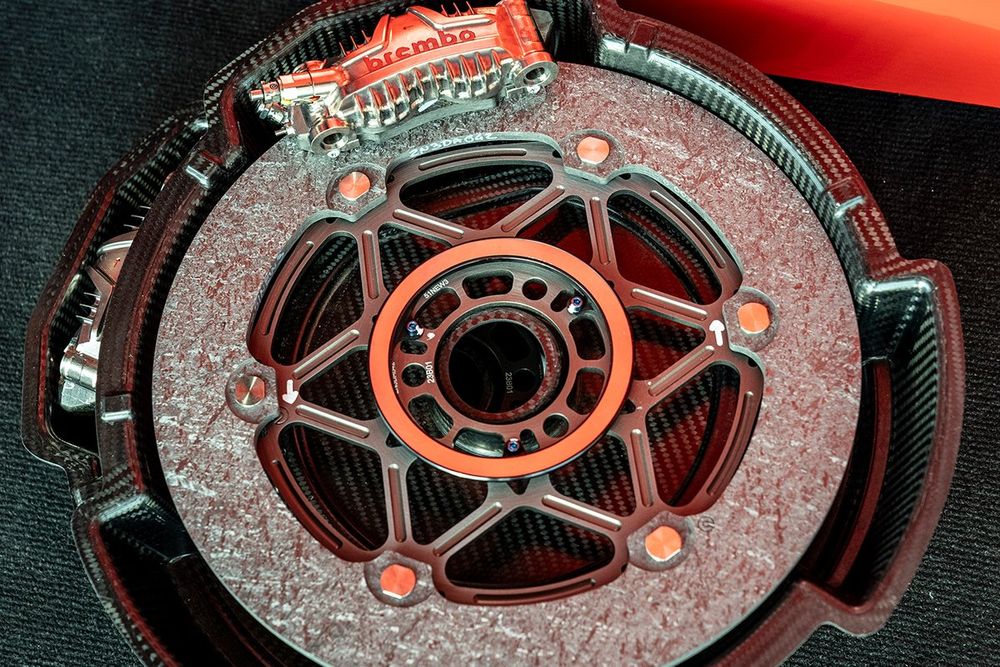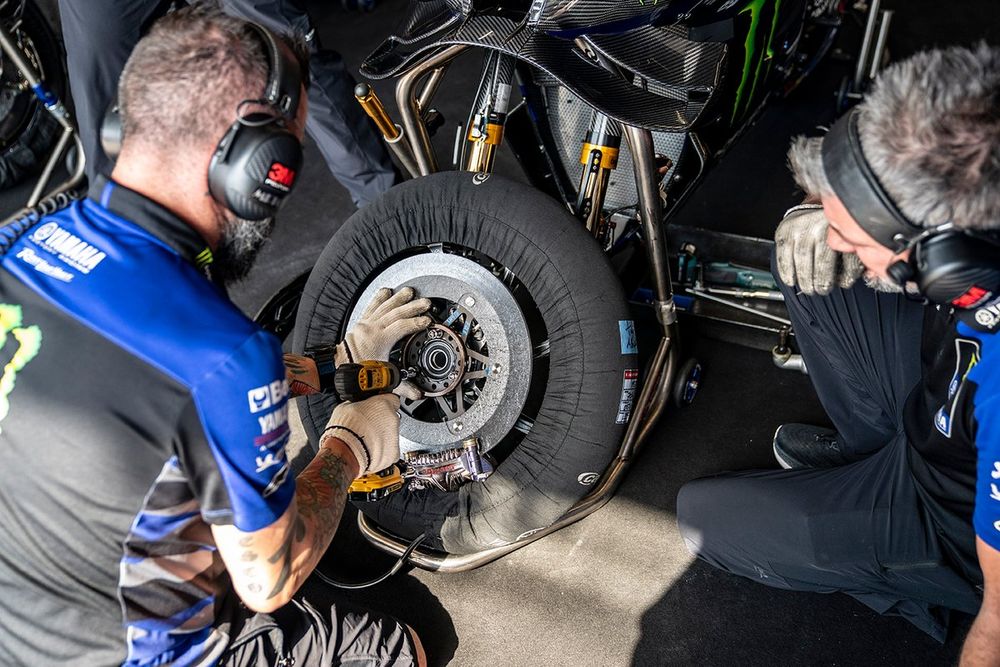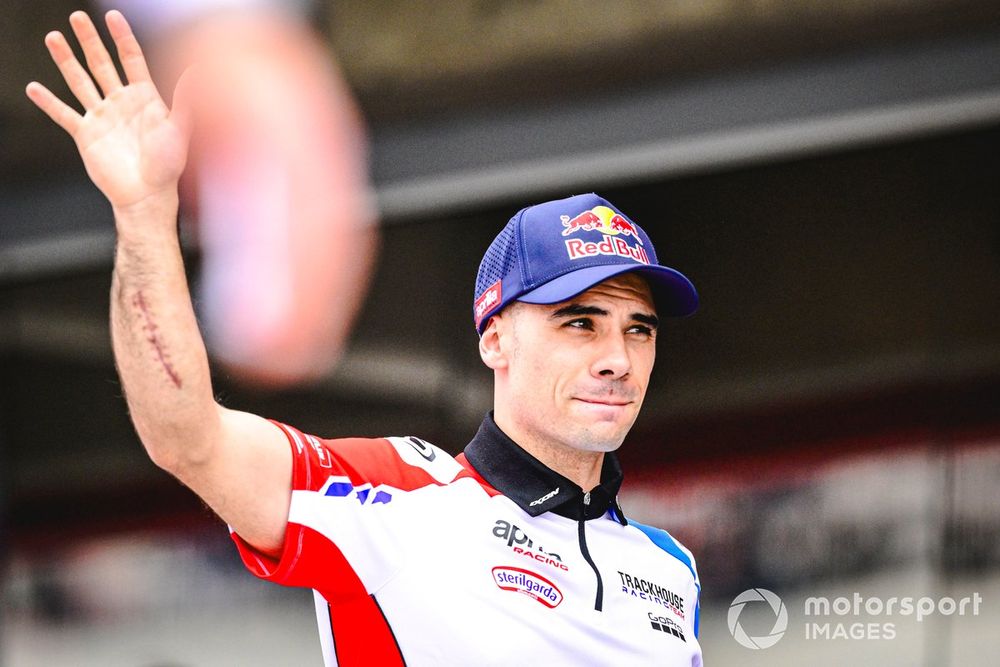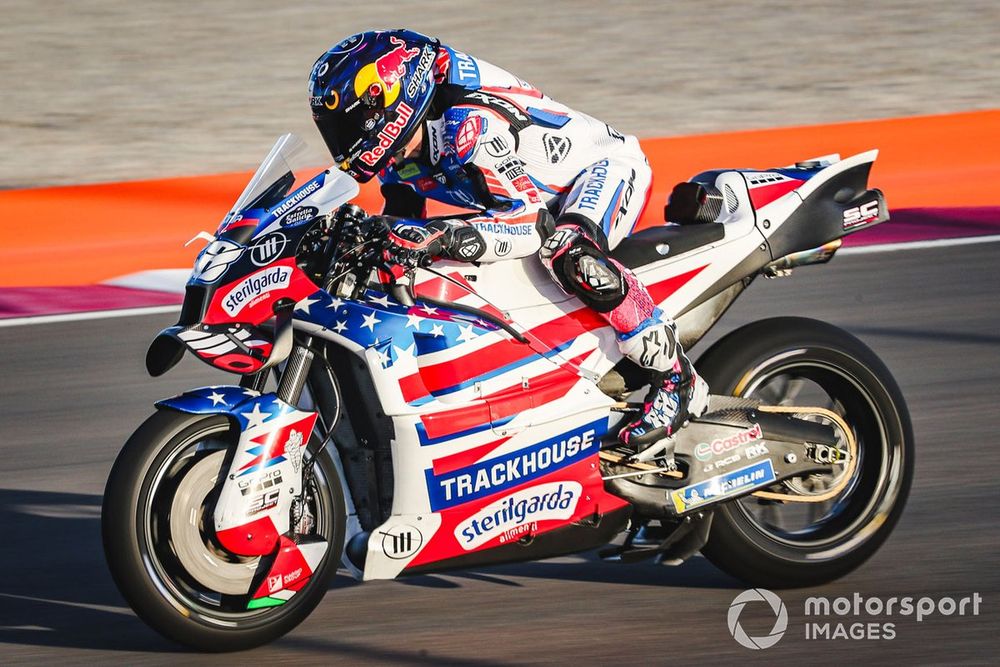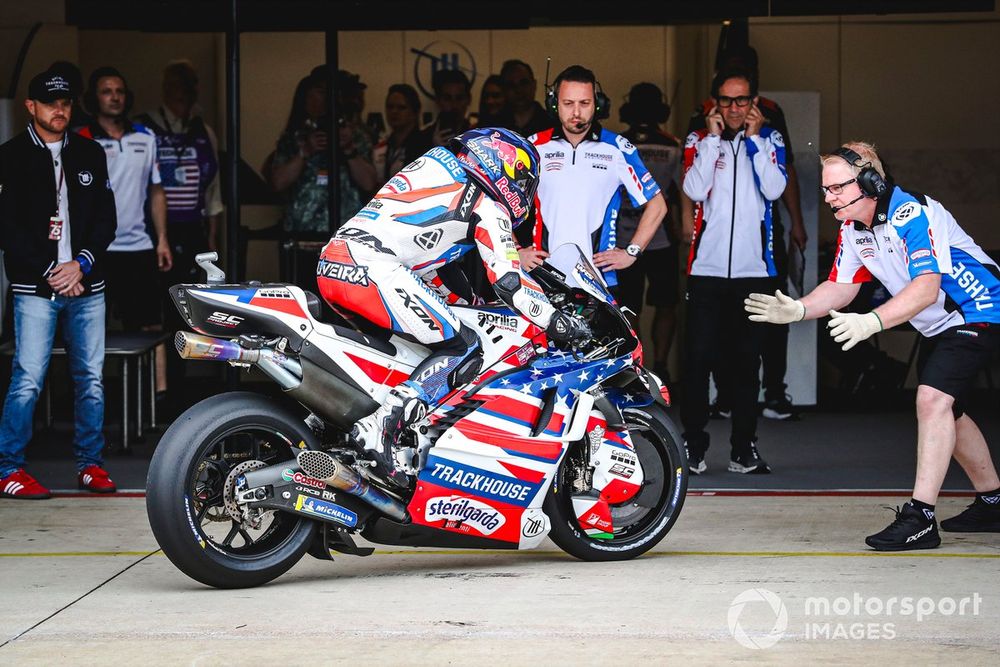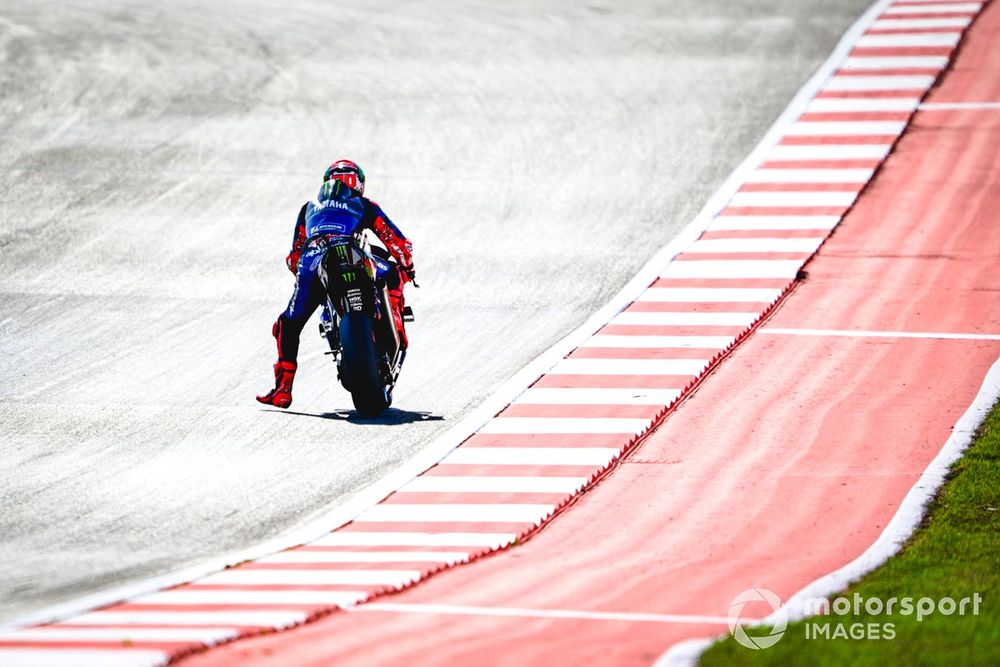Miguel Oliveira’s MotoGP experience and rider character have been identified as the key reasons for Yamaha to secure his signature at its new satellite squad Pramac.
The most drawn-out rider change for 2025 MotoGP was finally announced on the set-up day at the San Marino Grand Prix when Portugal’s sole representative on the grid was confirmed for Pramac Yamaha for 2025 and 2026 and for his fifth team and third brand in the premier class.
The 29-year-old, with five MotoGP wins to his name, has ridden KTM RC16 machinery for Tech3 and KTM and then the Aprilia RS-GP for RNF and his present Trackhouse Racing team during a six-year MotoGP stint. Oliveira has only made the MotoGP podium once with the Italian motorcycle, in this year’s German Grand Prix sprint, but is taking an even bigger step with his move to Japanese equipment for what will be his 15th season at world championship level – having started on a Suter/Honda in his first full-time year of Moto3 in 2012 before a spell steering Indian and European tech.
Even though Oliveira is a proven winner in all three classes, his input to a range of bikes and projects meant he was a valued target for Yamaha as they plough resources and cash into improving their MotoGP competitiveness. “[He] has the technical know-how, experience, speed, and precision needed to improve the performance of the Yamaha YZR-M1,” Yamaha boss Lin Jarvis stated in the official press release.
“Yamaha does not want to wait much longer to come back to the top,” Oliveira said in the Thursday press conference. “After being involved with two different manufacturers, I feel my adaptation capability is quite high. I’m riding in totally different way than I rode two years ago and I think this can help for sure give feedback and get things going quicker.
“Having a second factory team and being involved in such a team as Pramac is a huge motivation for me, as you can imagine, and I can’t wait to get started.”

Miguel Oliveira, Yamaha Factory Team, Lin Jarvis, Managing Director Yamaha Motor Racing
Photo by: Yamaha
Current team-mate Raul Fernandez has gleaned a lot from Oliveira’s systematic approach to try and extract the best from the seemingly temperamental RS-GP. Even more so when the Spaniard also adopted the latest ’24 model midway through this campaign.
“When I had a lot of problems to understand the bike, especially last year, I saw a lot of his data to understand what happened,” said the Spaniard. “He’s a really good rider, especially when we have difficult track conditions like we did in Aragon. You can always learn something [from] Miguel. He is a gentleman on the track and in the box.”
Oliveira’s versatility was felt at his previous team and KTM was eager to re-sign #88 until he opted for a change of scene with RNF in 2023.
“We had a long history with Miguel, coming from the other classes, and when he came to the MotoGP project — as a very smooth rider — he had a big contribution to how we developed the bike,” KTM’s MotoGP technical manager Sebastian Risse, explained.
“The results were polarising, let’s say, everything worked perfectly or it was difficult to find average performance. We had super-good moments and we also shared a lot of difficult moments together. We’re still connected and I’m glad he’s still on the grid and we can fight with him now.”
“Being sensitive is a very global thing,” the German added, specifically on Oliveira’s riding traits. “There were some areas [of the bike] where he was very sensitive and others that he could just ride around. He had his character, mainly related to his riding style; some things had to be perfectly as he wanted…and then he could also deal with a lot of things.”
Brad Binder was Oliveira’s team-mate in Moto2 and also for 2021 and 2022 at the factory KTM squad. “He’s a great rider and I think his style can suit this Yamaha, from what we see,” the South African said.
“He’s the kind of guy that maybe isn’t the latest braker…but he’s super-good at letting the bike roll and picking it up on the exit. I think he could be a good benefit for Yamaha and I think it will suit him. He was always super-open and helpful and that’s maybe what they need.”







